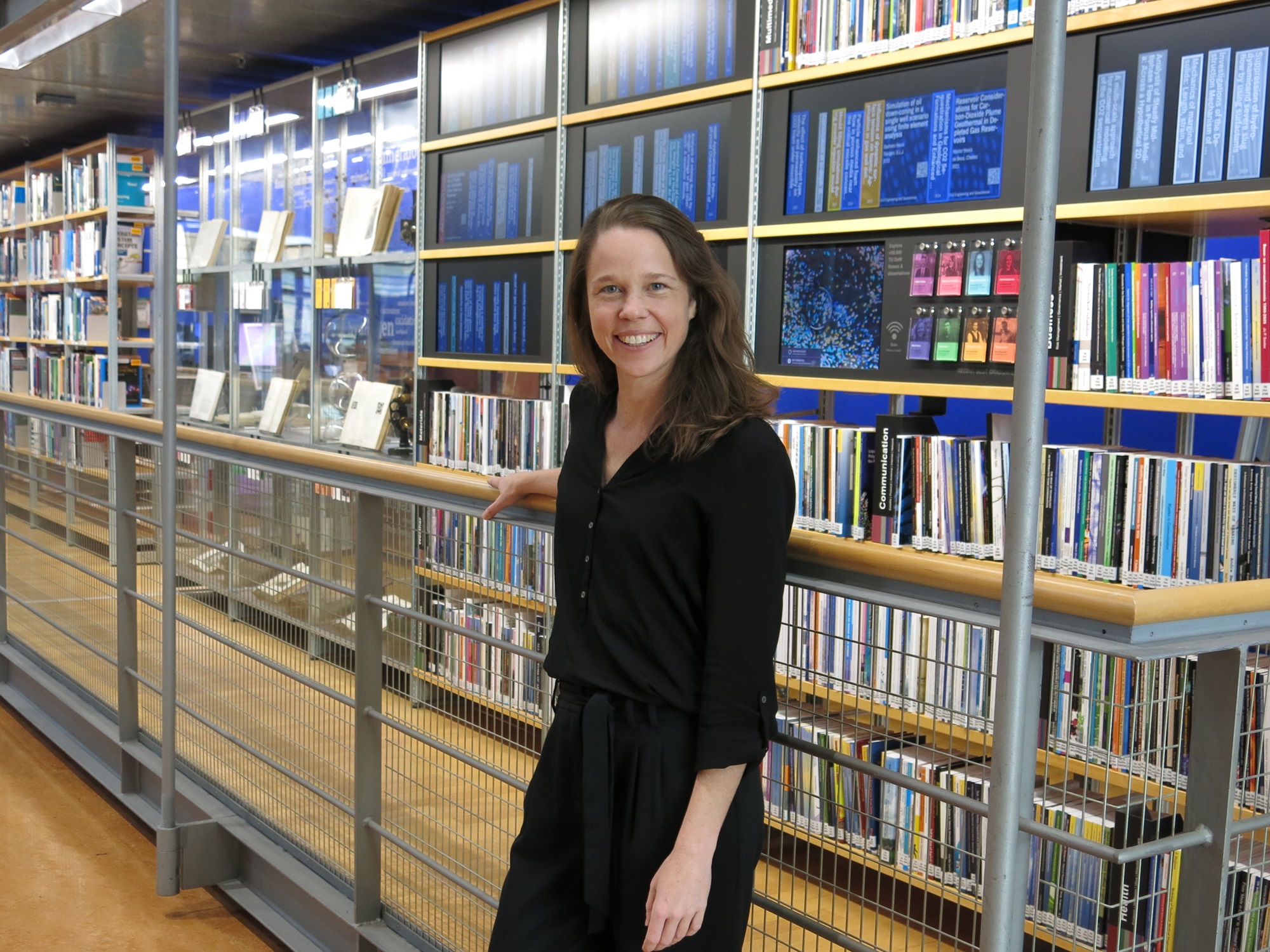Who are the people who study or work at TU Delft? We meet them in Humans of TU Delft. This time: Alice Bodanzky is leading the Collection Wall project in the TU Library.
Alice Bodanzky in front of the prototype Collection Wall at the TU Delft Library. (Photo: Heather Montague)
English only
“I am Project Manager at the Library Learning Centre, mainly involved in innovative projects and helping to shape the Library’s digital transformation and engagement strategy. Currently, I am leading the Collection Wall project, which is part of the TU Delft Library’s ongoing transformation.
Through a collaborative process that includes the Library’s stakeholders as well as teachers, researchers, and students, we have been exploring the opportunity space to turn the iconic book wall into a Collection Wall. The goal is to offer an interactive experience designed to inspire exploration, discovery, and serendipity. We aim to visualise and activate both our physical and digital collections, fostering new connections and narratives for educational purposes and cultural programming.
The Collection Wall is a key component of our mission to engage visitors through our library collections. It is important to note that we are talking about an iconic Book Wall, whose physical and symbolic presence is vital for the Library’s environment. It’s no wonder that it is often used in brand communications. The wall was designed by Francine Houben, one of the founders of Mecanoo Architects, and has been there since the Library was built. This year, we celebrated our 25th anniversary. The Library keeps in contact with Mecanoo, which is currently involved in the Library Learning Centre renovation.
One could say that the Book Wall is the visual backbone of the TU Delft Library, the embodiment of knowledge in our main hall. There is alignment amongst most stakeholders that the transformation should not be a drastic one. We know, however, that the purpose of the wall needs to be updated. The way information is accessed and shared has considerably altered over the years, opening new opportunities for the Wall. So, one of the challenges we face is how to bring visibility to our multiple collections while keeping the essence of the iconic design. How to merge the physical and digital collections in a meaningful experience that helps users to make new connections within the realm of their studies and research.
We have been exploring these challenges through a collaborative process that includes discussion, feedback, and co-creation sessions, and many course collaborations in different faculties. Computer Science students, for example, helped us to explore our collections data in a data retrieval course. Now, in the Interactive Environments minor, we have 25 students from different backgrounds conceptualising and prototyping innovative ways of encouraging visitors to discover the Collection Wall.
‘Visitors can experience our first attempt to integrate screens within shelve’
Another example is the Industrial Design Advanced Prototyping minor that has just started to work with us on how to enrich the experience of the heritage vitrine in the wall – how to design the 21st century vitrine. These collaborations with the courses, labs, and researchers are an important part of the process, not only because of the practical exploration and experimentation results, but most importantly because they allow us to involve state-of-the-art research and the bright minds of the TU Delft community in key challenges in the project. The most promising concepts that are derived from this process, we prototype and test in the actual context of use in the Library main hall. The user feedback, findings and insights are then incorporated into future sessions.
Now we have a prototyping area in the right corner of the wall, where visitors can experience our first attempt to integrate screens within shelves, displaying data from online repositories, and merging digital and physical academic collections. An interactive application, designed and developed by RNDR studio, visualises the entire thesis and dissertation collection from TU Delft in our distributed display system. Visitors can see publication timelines, filter data by subject areas, and visually explore interdisciplinary clusters. Physical dissertations and tokens that highlight the recent best graduates can be scanned for digital recommendations. Historic dissertations are paired with associated physical objects from our Academic Heritage collection, and displayed in vitrines with AI-generated keywords used to link content. Via tokens and QR codes, visitors can further digitally experience the vitrines’ content.
We are exploring the opportunity space for the Collection Wall. An important part of my role as project manager and creative leader consists of articulating a truly collaborative process, integrating stakeholders from the Library as well as from education and external partners in the Collection Wall discussions and explorations. By bringing the different perspectives together, we ensure that we are building a vision for the project that is feasible, sustainable, and that reflects our community needs and ambitions.”
- Interested in upcoming Library events? Click here.
Want to be featured in Humans of TU Delft? Or do you know someone with a good story to tell? Send us an e-mail at humansoftudelft@gmail.com
Heather Montague / Freelance writer



Comments are closed.